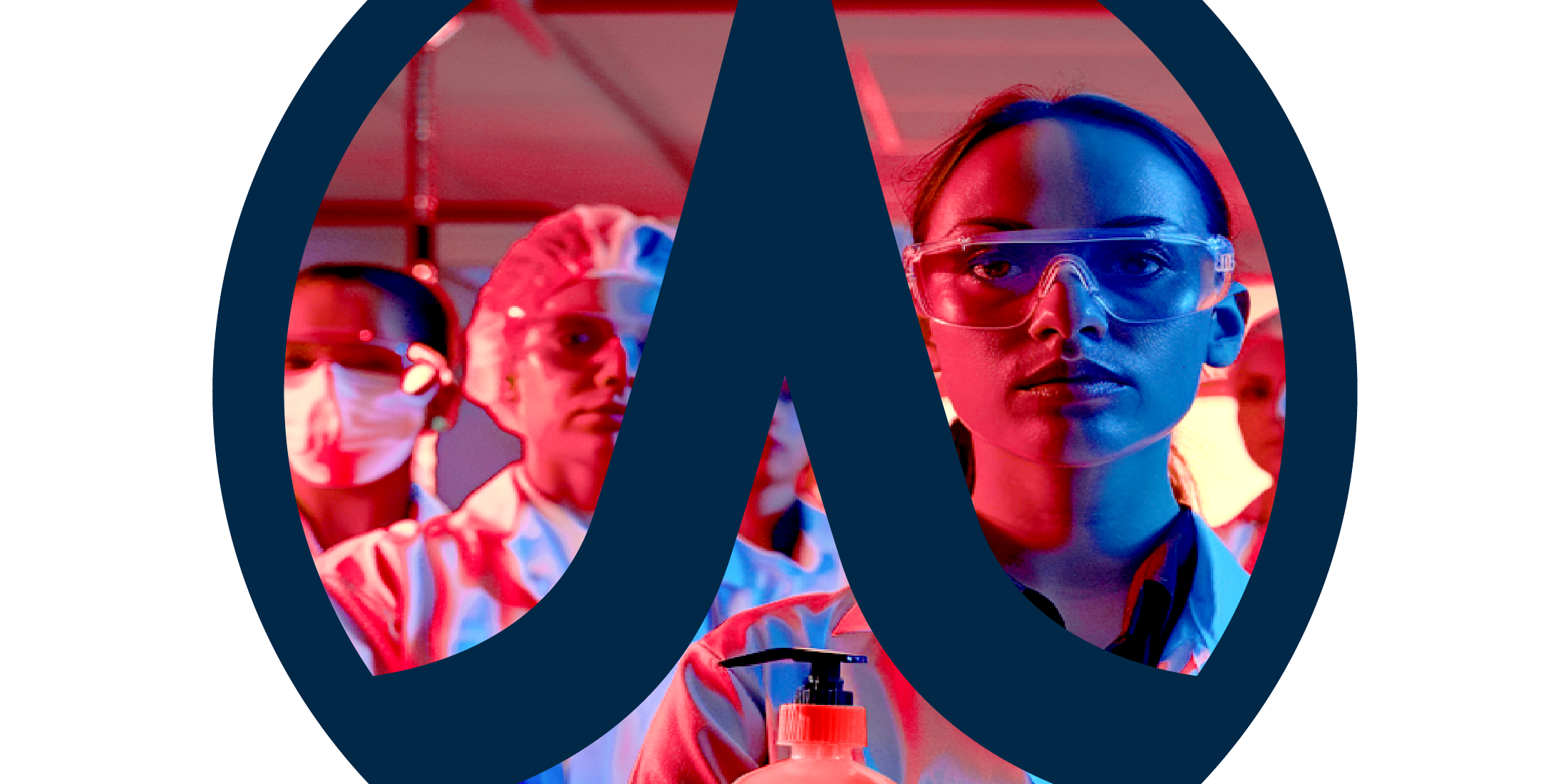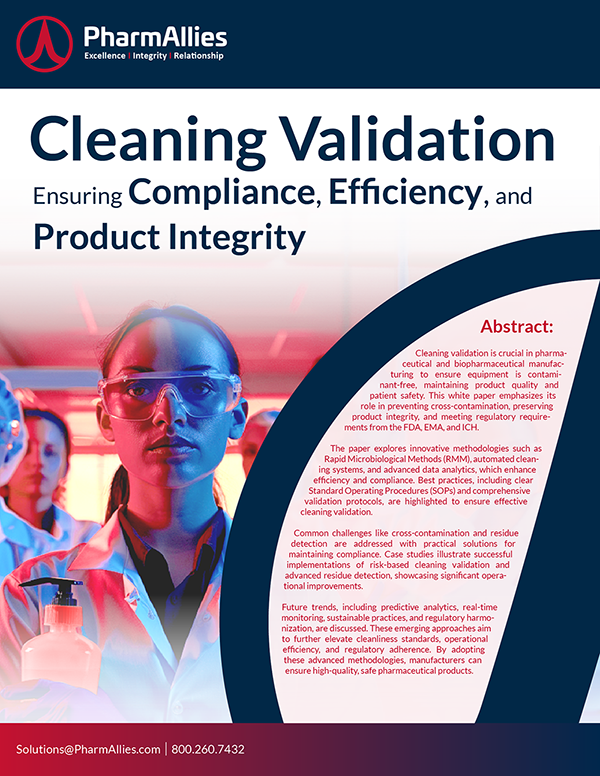Applying a Risk-Based Approach to Cleaning Validation
Introduction
In today’s pharmaceutical and biopharmaceutical manufacturing, adopting a risk-based approach to cleaning validation is essential for optimizing resources, enhancing efficiency, and ensuring compliance with regulatory standards. This approach allows you to prioritize and address the highest-risk areas, ensuring that cleaning procedures are both effective and efficient. By focusing on the critical areas that pose the most significant risks, you can allocate your resources more strategically, ultimately improving product quality and patient safety.
This article delves into the principles of a risk-based approach, outlining the steps to implement it effectively. I’ll provide detailed guidance on prioritizing resources, focusing on high-risk areas, and implementing robust risk mitigation strategies. This comprehensive approach not only ensures compliance with regulatory bodies such as the FDA, EMA, and ICH but also enhances the overall efficiency and effectiveness of cleaning validation processes.
Understanding a Risk-Based Approach
A risk-based approach involves identifying, assessing, and prioritizing potential risks in the cleaning validation process. By focusing on high-risk areas, you can allocate resources more effectively and ensure that cleaning procedures adequately mitigate these risks. The key components of a risk-based approach include.
- Risk Identification: Determining potential sources of contamination and failure in the cleaning process.
- Risk Assessment: Evaluating the likelihood and severity of these risks.
- Risk Prioritization: Focusing on the highest risks to ensure effective mitigation.
- Risk Mitigation: Implementing strategies to control or reduce identified risks.
Importance of a Risk-Based Approach
- Efficiency: Allocates resources to the most critical areas, improving overall efficiency.
- Compliance: Aligns with regulatory guidelines that emphasize risk management such as ICH Q9.
- Product Quality: Enhances product quality by ensuring that cleaning procedures effectively mitigate the highest risks.
- Patient Safety: Protects patient safety by preventing contamination and ensuring the integrity of pharmaceutical products.
Steps to Implement a Risk-Based Approach
Step 1: Risk Identification
The first step in a risk-based approach is to identify potential risks in the cleaning validation process. Identifying risks requires a thorough understanding of the cleaning processes and potential sources of contamination. This involves are such as process mapping, residue analysis and historical data review.
- Process Mapping: Create detailed process maps to identify all potential sources of contamination. This includes identifying critical equipment, processes, and steps where residues may accumulate.
- Equipment Design Analysis: Assess the design of equipment to identify areas that are difficult to clean, such as dead legs, crevices, and complex geometries.
- Residue Analysis: Identify all potential residues, including APIs, excipients, cleaning agents, and by-products. Consider both organic and inorganic residues, as well as microbial contaminants.
- Residue Characterization: Characterize residues to understand their chemical and physical properties, including solubility, toxicity, and adherence to surfaces.
- Historical Data Review: Review historical data, including previous validation studies, deviation reports, and cleaning failure records, to identify common issues and areas of concern.
Step 2: Risk Assessment
Once potential risks have been identified, the next step is to assess these risks based on their likelihood and severity. Assessing risks involves evaluating both the likelihood of occurrence and the potential impact.
- Risk Scoring: Assign scores for the likelihood and severity of each identified risk. Use a standardized scoring system to ensure consistency.
- Likelihood: Evaluate how likely it is that a particular risk will occur. Rare (1), Unlikely (2), Possible (3), Likely (4), Almost Certain (5).
- Severity: Assess the potential impact of the risk on product quality and patient safety. Negligible (1), Minor (2), Moderate (3), Major (4), Catastrophic (5).
- Risk Matrix: Use a risk matrix to plot the likelihood and severity scores and prioritize risks based on their overall risk level. High Risk: High likelihood and high severity. Medium Risk: Moderate likelihood and/or severity. Low Risk: Low likelihood and low severity.
- Cross-Functional Team Assessment: Conduct risk assessments with a cross-functional team to ensure a comprehensive evaluation of risks from different perspectives.
Step 3: Risk Prioritization
After assessing the risks, prioritize them to focus on the most critical areas. Prioritizing risks ensures that resources are focused on the most critical areas. Area that should be consider during risk prioritization are.
- Risk Ranking: Rank risks based on their overall risk score (likelihood × severity).
- Threshold Setting: Set thresholds for what constitutes high, medium, and low risks to guide prioritization efforts.
- Critical Control Points: Identify critical control points (CCPs) in the cleaning process where control measures are essential to mitigate high-priority risks.
- Resource Allocation: Allocate resources, such as personnel, time, and equipment, to address high-priority risks. Ensure that sufficient resources are dedicated to monitoring and controlling CCPs.
- Focus Areas: Prioritize areas with the highest risk scores for more frequent and thorough cleaning validation efforts.
- Resource Planning: Develop a resource plan to address high-priority risks, including timelines, personnel assignments, and budget allocations.
Step 4: Risk Mitigation
Implement strategies to mitigate the identified risks effectively. Mitigating risks involves implementing control measures and monitoring their effectiveness.
- Control Measures: Develop and implement control measures to reduce the likelihood and severity of high-priority risks. Validate control measures through testing and verification to ensure they effectively mitigate identified risks.
- Standard Operating Procedures (SOPs): Update SOPs to include specific measures for controlling identified risks.
- Cleaning Agents and Methods: Select and validate cleaning agents and methods that effectively mitigate the identified risks.
- Preventive Measures: Implement preventive measures to reduce the likelihood of contamination, such as using dedicated equipment for high-risk processes or improving equipment design.
- Monitoring and Verification: Establish monitoring and verification procedures to ensure that control measures are effective. Sampling and Testing: Conduct regular sampling and testing to verify that cleaning procedures are effectively mitigating risks. Trend Analysis: Perform trend analysis to monitor the effectiveness of control measures over time.
- Corrective Measures: Develop corrective measures to address identified risks, such as optimizing cleaning procedures or changing cleaning agents.
Step 5: Continuous Improvement
A risk-based approach to cleaning validation is an ongoing process that requires continuous improvement. Continuous improvement involves regularly reviewing and updating risk management strategies.
- Periodic Reviews: Conduct periodic reviews of the risk assessment and mitigation strategies to ensure they remain effective and up-to-date. Monitor the performance of cleaning processes and control measures through regular audits and inspections.
- Root Cause Analysis: Conduct root cause analysis for any cleaning failures or deviations to identify underlying issues and prevent recurrence.
- Training and Awareness: Provide regular training and updates to personnel involved in cleaning validation to ensure they are aware of the latest risk management strategies.
- Feedback Loop: Establish a feedback loop to incorporate lessons learned from cleaning validation studies and real-world experiences into the risk management process. Continuously optimize cleaning processes based on feedback and data from validation studies and real-world operations.
Best Practices for Implementing a Risk-Based Approach
Engage Multidisciplinary Teams
Involving experts from various fields ensures a comprehensive risk assessment and mitigation strategy.
- Collaboration: Foster collaboration among quality assurance, quality control, process engineering, and regulatory affairs teams.
- Regular Meetings: Hold regular meetings to discuss risk assessment findings, mitigation strategies, and continuous improvement efforts.
Follow Regulatory Guidelines
Adhering to guidelines from regulatory bodies such as the FDA, EMA, and ICH ensures compliance and facilitates regulatory approval.
- ICH Q9 Guidelines: Follow ICH Q9 guidelines for quality risk management in pharmaceutical manufacturing.
- Regulatory Updates: Stay informed about updates and changes to regulatory guidelines and adjust risk management strategies accordingly.
Implement Advanced Risk Assessment Tools
Using advanced risk assessment tools can enhance the accuracy and effectiveness of the risk-based approach.
- Failure Modes and Effects Analysis (FMEA): Use FMEA to systematically evaluate potential failure modes and their impact on cleaning validation.
- Hazard Analysis and Critical Control Points (HACCP): Apply HACCP principles to identify and control critical points in the cleaning process.
Ensure Comprehensive Training
Provide comprehensive training to all personnel involved in cleaning validation to ensure they understand risk management principles and practices.
- Training Programs: Develop and implement training programs on risk-based approaches and specific risk management tools.
- Competency Assessments: Regularly assess the competency of personnel to ensure they can effectively identify, assess, and mitigate risks.
Conclusion
Adopting a risk-based approach to cleaning validation in pharmaceutical and biopharmaceutical manufacturing is essential for optimizing resources, enhancing efficiency, and ensuring compliance with regulatory standards. By identifying, assessing, and prioritizing risks, you can focus on critical areas that pose the highest risks and implement effective mitigation strategies. Through detailed risk identification, assessment, prioritization, mitigation, and continuous improvement, you can maintain product quality, ensure patient safety, and achieve regulatory compliance. Implementing best practices, engaging multidisciplinary teams, following regulatory guidelines, and providing comprehensive training further enhances the effectiveness of the risk-based approach, ultimately safeguarding both product integrity and patient health.



